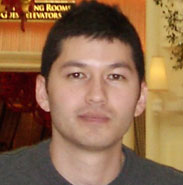Tsuruko Aoki: Wife, Lover, Transcultural Star
By Bryan Hikari Hartzheim
This DVD visual essay examines both the career and screen roles of Tsuruko Aoki, the Japanese-American silent film actress and wife to fellow star Sessue Hayakawa. The through line for the two roles of Aoki is the idea of assimilation: was Aoki expected to be an American or Japanese through her public and on-screen personas? The answer is, not surprisingly, a bit of both, though there are complexities with Aoki’s roles that reveal different assumptions and expectations in American society than those met by her husband. Aoki’s characters reveal specific gendered anxieties over East Asian integration into a changing American society, and these characters would find encouragement in their portrayal through both a Japanese and an English speaking public. In this way, it is instructive to read and see her star persona and films as indicative of audience fears different, though not unrelated, to those of Hayakawa, providing us with a broader view of Asian-American identity in the early 20th century.
The DVD essay was produced in 2008, and presented in an abridged format at the 2009 workshop at Josai University conducted in place of the Society of Cinema and Media Studies Conference to be held in Tokyo that year. Due to the format, I am unable to include lengthy quotations or footnotes within the text of the film itself, though I would like to acknowledge the main scholarship that has influenced my research here. Daisuke Miyao’s pioneering star study, Sessue Hayakawa: Silent Cinema and Transnational Stardom, is actually acknowledged within the essay, though his work deserves special recognition here, for his methodological approach to transnational media was fundamental in my attempting to look closely at the work of Tsuru Aoki (particularly the interrogation of Japanese-American sources such as The Rafu Shimpo newspaper, a broadsheet I had read growing up but had taken for granted). I have deferred to his scholarship and translations for the contextual portions of the essay dealing with Hayakawa. Sara Ross also deserves mention as the only other scholar to look closely at the public image of Aoki in her article, “The Americanization of Tsuru Aoki: Orientalism, Melodrama, Star Image, and the New Woman.” Both of their work found their way into this essay, and I hope my contribution builds on their foundation. Due to the scope of the essay, I greatly regret being unable to include important information on Aoki’s life and career following her departure to Japan and return to America, but I refer interested viewers to a splendid series by Yoshiro Torifumi that appeared in the Sankei Shimbun last year for a broader biographical portrait of this noble actress’s fascinating life.1
NOTES
- Torifumi, Yoshiro. “Harukanaru Hariwuddo: Aoki Tsuruko no seisan” (The Distant Hollywood: The Production of Aoki Tsuruko). Sankei Shimbun. 25 May 2009 to 7 September 2009.

Tsuruko Aoki: Wife, Lover, Transnational Star by Bryan Hikari Hartzheim is licensed under a Creative Commons Attribution-NonCommercial-NoDerivs 3.0 Unported License

